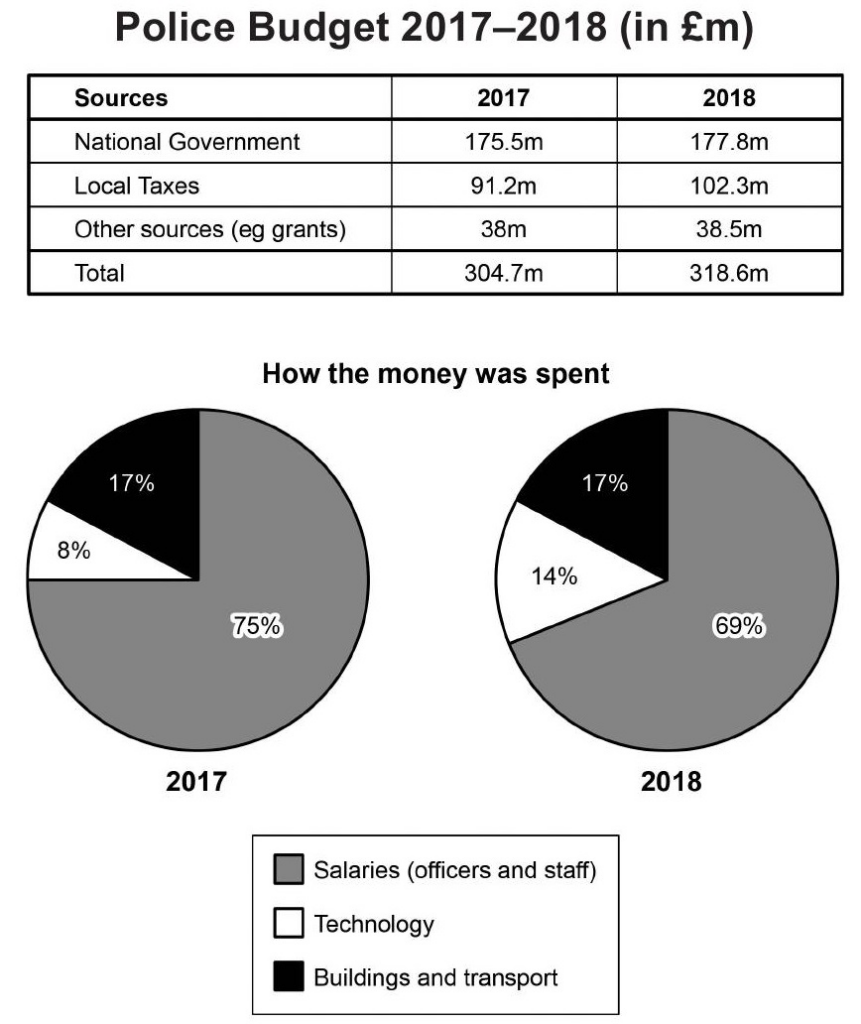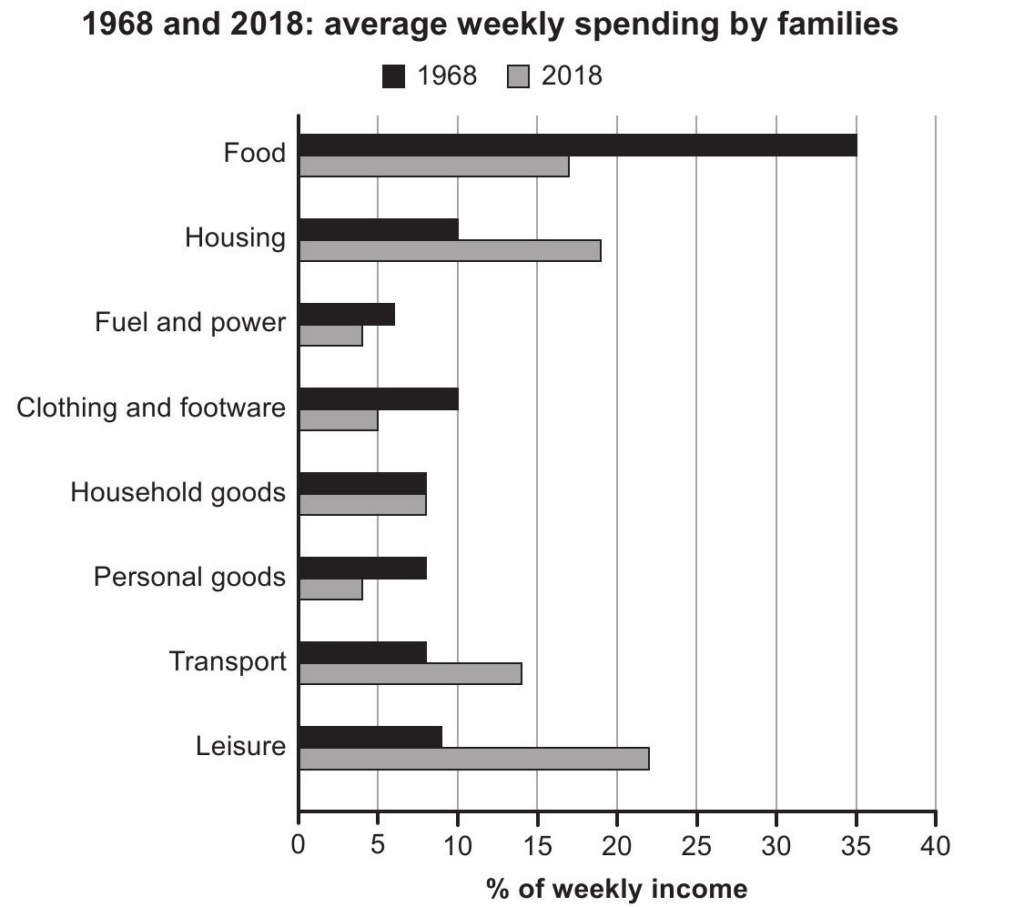Are you preparing for the Cambridge IELTS exam? Do you want to improve your writing skills and familiarize yourself with the test format? Look no further! In this article, we will explore Cambridge IELTS 17 writing tests 1 to 4. We will provide you with valuable samples to help you excel in your preparation.

Test 1 WRITING TASK 1
You should spend about 20 minutes on this task.
The maps below show an industrial area in the town of Norbiton, and planned future development of the site.
Summarise the information by selecting and reporting the main features, and make comparisons where relevant.
Write at least 150 words.

One sample for this obtained 7.5:
The maps illustrate the current layout of the industrial area in Norbiton as well as the proposed future development for the site.
At present, the industrial area predominantly consists of several factories aligned along a central road, with a distinct separation from the surrounding farmland and the town. The existing layout prioritizes industrial use, with minimal integration of residential or recreational spaces, which may limit community interaction and accessibility.
In contrast, the planned future development emphasizes a more balanced approach to land use. The redesign features a significant reduction in industrial space, as factories are diminished in number and relocated to accommodate new facilities. Notably, the introduction of residential housing is a key change, reflecting a shift towards creating a more livable community. Furthermore, the addition of a school and a playground indicates a commitment to enhancing the quality of life for residents, particularly families with children.
The future development also incorporates improved infrastructure, with the central road expanded to facilitate better connectivity between the residential, educational, and recreational areas. This design promotes community engagement and encourages a more vibrant local atmosphere, contrasting sharply with the previously isolated industrial setting.
In conclusion, the planned changes for the Norbiton industrial area represent a significant transformation. By prioritizing housing and community amenities over industrial facilities, the development aims to create a more integrated and supportive environment, ultimately enhancing the overall livability of the town.Test 1 WRITING TASK 2
You should spend about 40 minutes on this task
Write about the following topic:
It is important for people to take risks, both in their professional lives and their personal lives.
Do you think the advantages of taking risks outweigh the disadvantages?
Give reasons for your answer and include any relevant examples from your own knowledge or experience.
Write at least 250 words.
One sample obtain 8.0:
Taking risks is an intrinsic part of life that can lead to significant personal and professional growth. While some may argue that the potential downsides of risk-taking can be daunting, I believe that the advantages outweigh the disadvantages, particularly when it comes to fostering innovation and resilience.
In professional contexts, taking risks can lead to groundbreaking advancements. For instance, entrepreneurs often face uncertainty when launching new ventures. However, those who embrace risk can uncover unique opportunities, drive innovation, and achieve substantial rewards. A notable example is Elon Musk, whose willingness to invest in electric vehicles and space exploration has not only transformed industries but also inspired a new generation of thinkers and innovators. Without a willingness to take risks, many of today’s technological advancements may never have materialized.
On a personal level, risk-taking encourages individuals to step out of their comfort zones. Engaging in activities such as traveling alone, pursuing a new hobby, or making significant life changes can be intimidating, yet these experiences often lead to personal growth and increased confidence. For instance, someone who decides to move to a new city for a job may initially feel apprehensive, but the resultant exposure to new cultures and ideas can greatly enrich their life.
However, it is essential to acknowledge that taking risks involves potential downsides, such as failure or loss. Nonetheless, these experiences can serve as valuable lessons that contribute to personal development and resilience. Learning to cope with setbacks ultimately strengthens character and prepares individuals for future challenges.
In conclusion, while taking risks may involve uncertainties and potential drawbacks, the benefits of personal and professional growth, innovation, and resilience significantly outweigh the disadvantages. Embracing risk is crucial for a fulfilling and progressive life, enabling individuals to unlock their true potential and seize opportunities that might otherwise remain inaccessible.Test2 WRITING TASK 1
You should spend about 20 minutes on this task.
The table and charts below give information on the police budget for 2017 and 2018 in one area of Britain. The table shows where the money came from and the charts show how it was distributed.
Summarize the information by selecting and reporting the main features, and make comparisons where relevant.
Write at least 150 words.

A very good sample:
The table and charts present an overview of the police budget for one area in Britain for the years 2017 and 2018, detailing both funding sources and expenditure distribution.
In terms of income, the total police budget rose from £304.7 million in 2017 to £318.6 million in 2018, marking an increase of approximately 4.3%. The primary source of funding, the National Government, saw a slight increase from £175.5 million to £177.8 million. However, the most significant change occurred in local taxes, which surged from £91.2 million to £102.3 million, reflecting a notable 12.1% rise. Other sources, including grants, remained stable at £38 million.
Examining the distribution of expenditures, a notable shift occurred between the two years. In 2017, 75% of the budget was dedicated to salaries for officers and staff, while only 8% was allocated to buildings and transport. By 2018, salary expenditure decreased to 69%, while spending on technology increased significantly to 14%, and buildings and transport rose to 17%. This shift indicates a strategic emphasis on modernizing resources and enhancing operational efficiency.
In summary, the police budget experienced a modest increase in total funding, with a significant rise from local taxes. Additionally, there was a clear change in expenditure priorities, favoring technology and infrastructure over salaries, suggesting an adaptation to contemporary policing needs.Test2- WRITING TASK 2
You should spend about 40 minutes on this task.
Write about the following topic:
Some children spend hours every day on their smartphones.
Why is this the case? Do you think this is a positive or a negative development?
Give reasons for your answer and include any relevant examples from your own knowledge or experience.
Write at least 250 words.
A pretty good sample below:
The increasing amount of time children spend on smartphones has become a prevalent issue in today’s digital age. Several factors contribute to this trend, and while there are both positive and negative aspects, I believe that the drawbacks largely outweigh the benefits.
One significant reason children are drawn to smartphones is the availability of engaging content. With access to games, social media, and educational apps, smartphones provide a platform for entertainment and learning that can captivate young minds. Furthermore, smartphones facilitate social interactions; children can connect with peers instantly, which is especially appealing in an age where social validation often occurs online.
Despite these advantages, the negative implications of excessive smartphone use cannot be ignored. Prolonged screen time can lead to a range of health issues, including eye strain, poor posture, and disrupted sleep patterns. Moreover, excessive smartphone use can hinder the development of crucial social skills. Children may struggle to engage in face-to-face interactions, leading to difficulties in forming meaningful relationships and reducing their ability to communicate effectively in real-life situations.
Additionally, the addictive nature of many apps and games can result in reduced physical activity. With an increasing number of children leading sedentary lifestyles, this trend can contribute to obesity and related health issues.
In my personal experience, I have observed friends’ children becoming increasingly isolated as they prioritize their screens over outdoor play and social gatherings. This shift not only limits their physical activity but also diminishes their opportunities to develop essential life skills.
In conclusion, while smartphones offer valuable resources for entertainment and learning, the excessive time children spend on them poses significant risks to their physical health and social development. It is crucial for parents and educators to find a balance, promoting healthy smartphone use while encouraging children to engage in more active and interactive pursuits.Test3 WRITING TASK 1
You should spend about 20 minutes on this task.
The chart below gives information about how families in one country spent their weekly income in 1968 and in 2018.
Summarize the information by selecting and reporting the main features, and make comparisons where relevant.
Write at least 150 words.

A sample obtained 7.5:
The chart compares the average weekly spending of families in one country in 1968 and 2018, highlighting shifts in expenditure priorities over the fifty-year period.
In 1968, the largest portion of family income was allocated to food, accounting for approximately 35% of weekly spending. This was followed closely by housing, which took up around 30%. Other significant expenses included transport and clothing, each constituting about 10-15% of the budget. Notably, leisure and personal goods received much less attention, with spending on leisure at around 5%.
By 2018, family spending patterns had transformed considerably. The percentage allocated to food decreased significantly to around 20%, reflecting changes in food affordability and consumption habits. Conversely, spending on housing rose to about 35%, indicating a growing financial burden in this area. Additionally, leisure spending saw a marked increase, rising to approximately 15%, suggesting a shift toward prioritizing quality of life and recreational activities.
Overall, the data illustrates a clear transition in family spending, with a decline in food expenditure and an increase in housing and leisure expenses, reflecting broader socio-economic changes over the decades.Test 3 WRITING TASK 2
You should spend about 40 minutes on this task.
Write about the following topic:
Some people believe that professionals, such as doctors and engineers, should be required to work in the country where they did their training. Others believe they should be free to work in another country if they wish.
Discuss both these views and give your own opinion.
Write at least 250 words.
A very good sample blow:
The question of whether professionals, particularly in fields like medicine and engineering, should be mandated to work in the country where they received their training is a contentious topic. Proponents of this viewpoint argue that it is essential for retaining talent and ensuring that the country benefits from the investments made in education. Conversely, opponents believe that professionals should have the freedom to pursue opportunities internationally, enhancing their skills and experiences.
Supporters of the requirement for professionals to work in their training country contend that substantial public resources are often invested in their education. For instance, government-funded medical schools equip future doctors with the skills necessary to serve local populations. If these graduates leave their home country, it creates a brain drain, exacerbating shortages in critical sectors such as healthcare and engineering. This can lead to a decline in the quality of services offered to the public, particularly in developing nations where healthcare and infrastructure are already under strain.
On the other hand, allowing professionals the freedom to work abroad can lead to numerous advantages. Exposure to different cultures and advanced technologies can enhance their expertise and adaptability. For example, a doctor who trains in a developed country may bring back valuable knowledge and techniques that can improve healthcare standards at home. Moreover, the globalized nature of today's economy often requires professionals to have international experience to remain competitive.
In my opinion, while it is important for countries to retain skilled professionals, imposing strict obligations may not be the best approach. Instead, governments could create incentives for professionals to stay, such as competitive salaries, career development opportunities, and better working conditions. This would encourage them to contribute to their home country while still allowing the flexibility to gain international experience.
In conclusion, both perspectives have valid arguments. Striking a balance between retaining local talent and allowing professionals to explore global opportunities can lead to mutual benefits, ultimately enhancing skills and services in their home countries while also fostering global collaboration.Test 4 WRITING TASK 1
You should spend about 20 minutes on this task.
The graph below shows the number of shops that closed and the number of new shops that opened in one country between 2011 and 2018.
Summarise the information by selecting and reporting the main features, and make comparisons where relevant.
Write at least 150 words.

A pretty good sample for this graph below:
The provided graph illustrates the trends in shop closures and openings in a country from 2011 to 2018.
In 2011, the number of shop closures was approximately 7,500, which was significantly higher than the 4,000 new shops that opened. This trend continued into 2012, with closures peaking at around 9,000 in 2013, while openings remained relatively stable. From 2013 to 2015, closures saw a dramatic decline, dropping to about 4,000 in 2015, aligning closely with the number of openings, which fluctuated between 3,500 and 4,500.
However, 2016 marked a notable shift; closures surged again to nearly 8,000, while openings dropped to just over 3,000, the lowest in the observed period. Following this peak in closures, both figures stabilized between 2017 and 2018, with closures remaining around 5,000 and openings slightly increasing to about 4,000.
Overall, the data highlights a significant fluctuation in shop dynamics, with closures consistently outnumbering openings, particularly during the peak years of 2013 and 2016.Test4 WRITING TASK 2
You should spend about 40 minutes on this task.
Write about the following topic:
Nowadays, a growing number of people with health problems are trying alternative medicines and treatments instead of visiting their usual doctor.
Do you think this is a positive or a negative development?
Give reasons for your answer and include any relevant examples from your own knowledge or experience.
Write at least 250 words.
A sample for this obtained very high grade:
The increasing trend of individuals opting for alternative medicines and treatments in place of conventional medical care raises significant debate. While this shift can be seen as a positive development in some respects, it also poses risks that cannot be overlooked.
On one hand, alternative medicine often emphasizes a holistic approach, focusing on the overall well-being of individuals rather than just treating symptoms. Practices such as acupuncture, herbal remedies, and mindfulness techniques can provide relief for various ailments and may appeal to those seeking more personalized care. Additionally, many alternative treatments are grounded in centuries of practice and can complement conventional medicine effectively. For example, the integration of yoga and meditation into treatment plans for chronic illnesses has shown promise in improving patients' quality of life.
However, the growing reliance on alternative treatments can lead to negative consequences, particularly when individuals forgo necessary medical attention. Some alternative therapies lack rigorous scientific validation, leading to ineffective or even harmful results. For instance, patients with serious conditions like cancer may delay essential treatments in favor of unproven alternatives, compromising their health outcomes. Furthermore, the lack of regulation in the alternative medicine field can expose individuals to fraudulent practices and products.
In conclusion, while alternative medicines can offer valuable supplementary options, it is crucial for individuals to maintain a balanced approach. Consulting healthcare professionals and integrating alternative treatments under their guidance can ensure that patients benefit from the best of both worlds. Ultimately, informed decision-making is essential to safeguard health and well-being in this evolving landscape of healthcare.
Leave a Reply